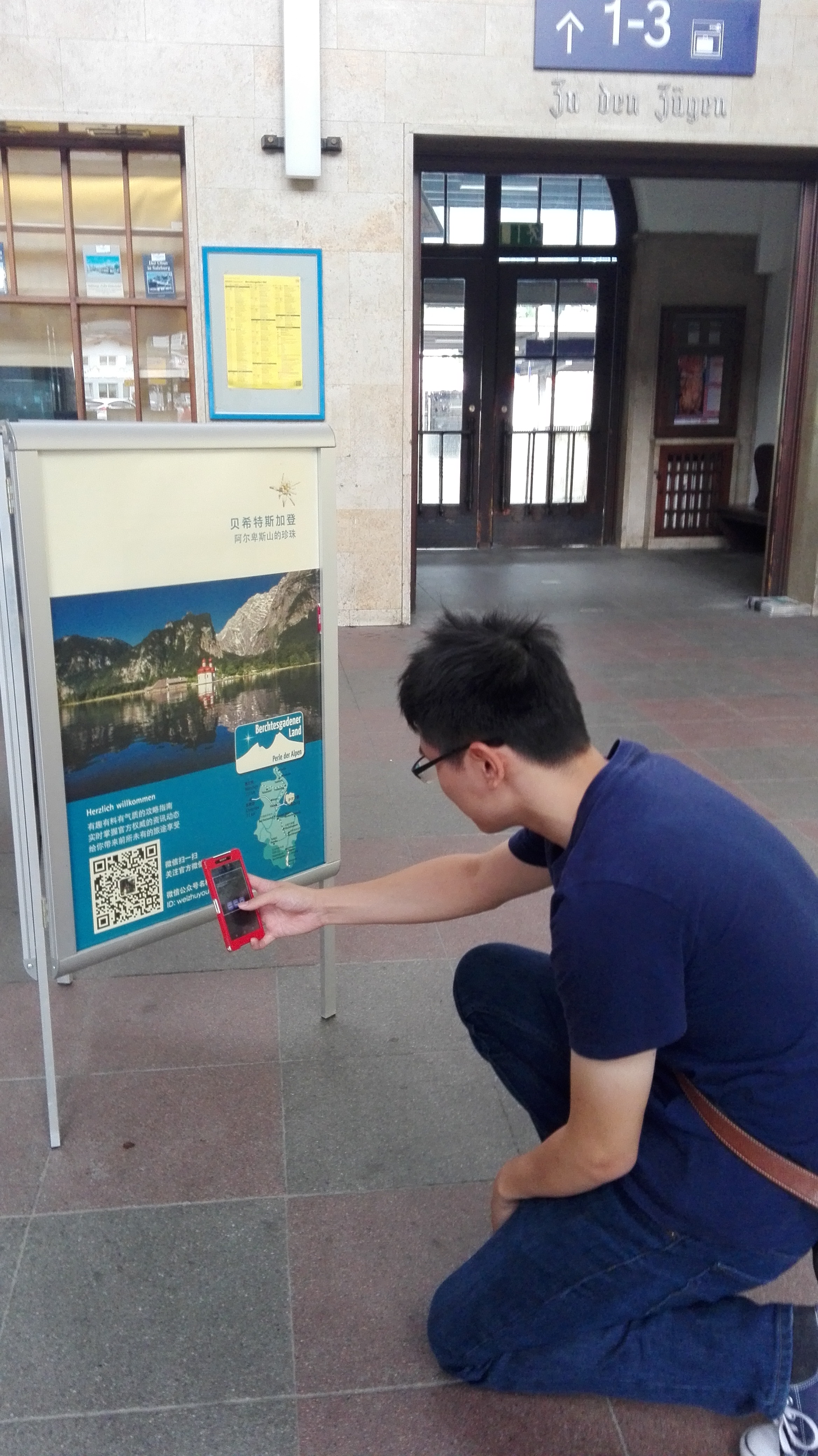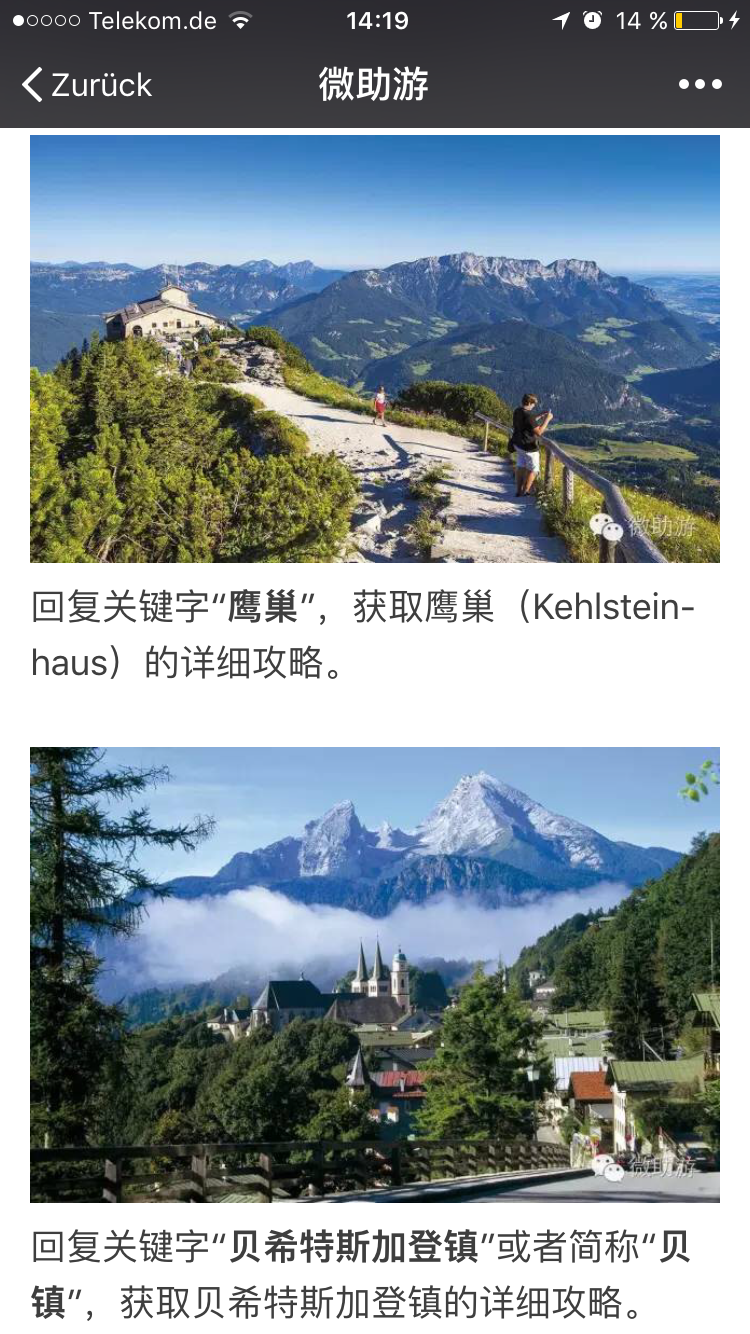by Aleen Dam & Fabian Wettinger
We, that is the Master course of Innovation & Management in Tourism at FH Salzburg, were given the task to research about different touristic solutions in an IT context. Our university of applied sciences has a strong focus on e-tourism, so learning and researching about these topics is an essential part of our student lives. In our current subject called E-Tourism Solutions, we discover the many different actors in this field, in order to gain a proper overview in this seemingly endless jungle of suppliers.
Finding a topic – or rather deciding on one of the countless topics available – wasn’t easy. It wasn’t until the first round of presentations that my group partner Aleen and I decided to focus on WeChat. Some of our classmates had shown us the touristic use of AliPay, so we made it our goal to present its counterpart WeChat and its payment service.
So, what is WeChat? In case you are not Chinese and/or you have never lived in China, chances are you might not be familiar with it. 90% of its 1.16 billion monthly active users live in China. There, where Facebook is forbidden, WeChat filled the void of social media back in the day. What started as a simple messenger service soon grew bigger and bigger. So-called mini-programs were added constantly. A mini-program is basically what we know in Europe as an app. They are developed and provided by other companies than WeChat, which offers its application as a platform for them to be used at. Those mini-programs have all sorts of functions and they make WeChat the Swiss army knife of social media: Anything you have a separate application for on your phone is most likely included as a mini-program inside of WeChat. Do you want to book a hotel? Use the booking engine of WeChat. Do you want to hire a taxi? WeChat will do that for you. Do you want to shop online? Use the online shops inside of WeChat and pay with WeChat Pay. Do you want to find a train connection? Find it and book the ticket on WeChat. Do you want to play games on your phone? Buy and play them inside of WeChat. Do you want to find a date? Filter and talk to available WeChatters nearby who want the same. Do you want to order a dish in the restaurant? Place your order on WeChat and pay for it at the same time, without any contact with the waiter. You want to – ok, I think you get the picture. The connection from the outside world to the WeChat application is usually formed through QR-codes: Whenever you want someone to use your service on WeChat, just stick a QR-code to an obvious place and it will guide them to whatever WeChat-function you wish.
© Berchtesgadener Land Tourismus GmbH – Press Release
Now you might ask yourself who is the genius mind behind this universal tool that seems to solve all everyday problems. Could it be Zuckerberg, or Wozniak maybe? The answer is far less glamorous: WeChat was developed by Tencent Holdings Ltd., a Chinese company famous for its computer games, payment service, artificial intelligence, and other related products. Said payment service (TenPay) has been integrated into WeChat as WeChat Pay and has since grown to become serious competition to AliPay. If you are familiar with Google Pay or Apple Pay, WeChat Pay is comparable with similar options to pay both in the online and the tangible world.
With its massive popularity in China and the many functions that it offers, it is obvious that approximately 20 Million Chinese businesses and state institutions rely strongly on WeChat to get and keep in contact with their customers, to sell their products and to spread information. The tourism industry is no exception: Chinese accommodation, traffic and leisure providers market their products through WeChat and make themselves part of their customers’ lives.
So why don’t European tourism providers use WeChat to get in contact with their Chinese guests? Could it be because of moral doubts? It is no question that WeChat has many flaws, among them their data transfer to the Chinese government, which it uses to control its people. Or their factual social media monopoly in China, which makes it just too tempting to abuse the power that comes along with such a position. But Facebook, which is widely accepted in the tourism field, is no saint either – its utter failure when it comes to stopping fake news and the rise of extremist movements worldwide due to its algorithms (echo chambers) just being two examples.
Keeping this in mind, it might simply be a lack of awareness, that it only takes one more social medium in one’s communication portfolio to address millions of potential Chinese tourists. Little steps are being made in implementing WeChat outside of China: Many European and American Airports offer WeChat Pay as a payment option in their shops. But we are still far from German train information and tickets being available on WeChat or from finding vacation homes in remote Austrian valleys through its booking engine.
Yet there are a few examples which might function as a guiding light: The German city of Hamburg runs Hamburg House in Shanghai, a kind of cultural and touristic embassy. They use WeChat heavily to spread promotional videos and articles written in the Chinese language, for example about the recently completed Elbphilharmonie concert hall.
In Austria, the national tourist office also uses WeChat in order to communicate with potential Chinese tourists. Furthermore, they collaborate with Schönbrunn castle in Vienna to develop ticketing functions: WeChat users can now purchase visitor tickets in advance on WeChat and redeem them onsite through a QR-code, as it is custom in China.
© Berchtesgadener Land Tourismus GmbH – Press Release
There is even an example within the eyesight of Salzburg: The German county of Berchtesgadener Land has witnessed a growing number of Chinese tourists, eager to see attractions such as Lake Königssee, the infamous Eagle’s Nest and the picture-perfect village of Ramsau. In order to get in contact with them, the destination management organization Berchtesgadener Land Tourismus GmbH (BGLT) decided to get active on WeChat in 2015. In collaboration with an expert they set up a WeChat account with several functions: There is an FAQ-section, answering the most common questions among Chinese tourists, such as where to find local milk, how to experience “Alm”-feeling without much effort and where to buy traditional Bavarian clothing. Also, there is a chatroom for tourists to share experiences, a dictionary with the most important translations into German and basic information about tourist attractions, like how to get there and opening hours. As touchpoints, the BGLT placed posters with information in Chinese and WeChat-QR-codes at tourist hot spots.
© Berchtesgadener Land Tourismus GmbH – Press Release
So what is it that convinced the BGLT or the Austrian National Tourist office to implement WeChat? The Chinese are a promising tourist group due to China’s economic development. Therefore, one must deal with their needs in order to win them as customers. To the majority of Chinese mobile phone users, WeChat is an important part of their lives and it offers great opportunities to tourism providers: You can be part of the entire customer journey in just one channel – use it for advertisement, communication, booking, transportation, payment, information and sharing memories. Life can be so easy.
References:
Berchtesgadener Land Tourismus GmbH (2016): WeChat-Kampagne erfreut chinesische Touristen im Berchtesgadener Land. Berchtesgaden. Retrieved from: https://www.berchtesgadener-land.com/presse/ideen-texte-fakten/pressemeldungen/wechat-kampagne-erfreut-chinesische-touristen-im-berchtesgadener-land (15 May 2020)
CNBC LLC. (2017): What is Tencent? Englewood Cliffs. Retrieved from: https://www.youtube.com/watch?v=m5yFhJFqw5w (1 April 2020)
Österreich Werbung Wien (2019): WeChat im Tourismusmarketing. Vienna. Retrieved from: https://www.austriatourism.com/blog/2019/wechat-onlinemarketing-in-china/ (15 May 2020)
Statista, Inc. (2020): Number of monthly active WeChat users from 2nd quarter 2011 to 4th quarter 2019. New York. https://www.statista.com/statistics/255778/number-of-active-wechat-messenger-accounts/
Stephan Mayer (2018): Welche Rolle spielt WeChat für den Tourismus in Deutschland? Shanghai. Retrieved from: https://socialmedia-blog.net/china/wechat-tourismus-deutschland/ (14 May 2020)
Pictures:
Berchtesgadener Land Tourismus GmbH (2016): WeChat-Kampagne erfreut chinesische Touristen im Berchtesgadener Land. Berchtesgaden. Retrieved from: https://www.berchtesgadener-land.com/cdn/uploads/bglt-china.jpg
https://www.berchtesgadener-land.com/cdn/uploads/bglt-wechat-screenshot.png
https://www.berchtesgadener-land.com/cdn/uploads/bglt-wechat-chinesischer-tourist.jpg (15 May 2020)


